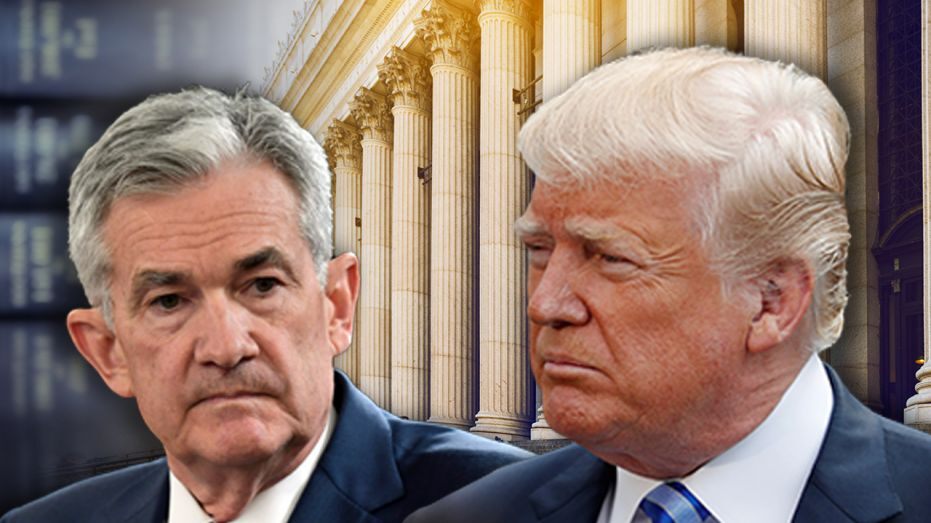Federal Reserve Chairman Jerome Powell speaks about inflation and when the Fed would change the stance of monetary policy.
If you never read past the headlines about the Federal Reserve, it’s easy to get the impression that the central bank is a one-person show subject to the whims of leaders from “market whisperer” Alan Greenspan to the current chairman, Jerome Powell.
Continue Reading Below
They’re just the public faces of the organization, though. While they make headlines announcing and explaining why the Fed raises or lowers interest rates, they don’t set them on their own.
That task falls to the monetary policy committee, officially known as the Federal Open Market Committee and often abbreviated in news coverage as the FOMC. It typically has 12 members — the seven governors appointed by the president and confirmed by the Senate — and five regional Fed presidents, four of whom serve on a rotating basis.
TRUMP CRITICIZES POWELL AS FED CHAIR TESTIFIES BEFORE CONGRESS
The fifth spot is held by the head of the New York Fed, which regulates Wall Street and handles the market operations that let the central bank keep interest rates at its desired levels.

The committee’s structure “helps ensure a diversity of perspectives on monetary policy,” making sure that members are aware of the perspectives of local communities and sustaining support for the Fed, Powell — the bank’s 16th chairman — testified at his confirmation hearing in late 2017.
The primary benchmark, the federal funds rate, is reviewed at the committee’s regular meetings, eight of which are scheduled every year — roughly every six weeks. To meet the bank’s dual mandate of fostering stable economic growth and maximum employment, rates can be raised to prevent the economy from overheating or lowered to spur spending when it slows down.
TRUMP’S NEW FED NOMINEES: JUDY SHELTON, CHRISTOPHER WALLER
While the Fed tries to make changes in interest rates as predictable as possible, “the future cannot be known with certainty,” Powell explained during his confirmation. “So we must retain the flexibility to adjust our policies in response to economic developments.”
Lawmakers have generally attempted to insulate the Fed from shifting political pressures, but the central bank hasn’t been immune from them. President Richard Nixon urged then-Chairman Arthur Burns to keep rates low before his reelection campaign in 1972, and President Trump has frequently criticized Powell for rates he says are too high.
The Fed’s duties have included safeguarding the U.S. financial system since its founding in 1914, an event that followed two previous attempts by a fledgling U.S. government starting as early as 1789. Congress declined to renew the charter of the First Bank of the United States in 1811 and President Andrew Jackson vetoed an attempt to renew the second in 1836.

Fed Chairman Jerome Powell, left, has been criticized frequently by President Trump, who chose him to succeed Obama appointee Janet Yellen.
Over the next 70 years, the country relied on a sprawling array of banks overseen by state governments, which issued their own paper notes. Many institutions didn’t keep enough cash on hand for unexpectedly heavy demand and were prone to collapse in the event of a run, which could trigger a string of bank failures and a broad panic, as happened in 1837 and 1873, according to a history compiled by the San Francisco Fed.
FEDERAL RESERVE PRESSER: LIVE BLOG
It was only after a particularly severe panic in 1907 — not resolved until financier J.P. Morgan arranged emergency loans for threatened Wall Street banks — that Congress found the motivation to try again.
Morgan died in 1913, the year that Congress established the Federal Reserve System, with eight to 12 regional banks and a national governing board. The Federal Open Market Committee was added in 1935, and Congress formalized the goals of price stability and maximizing employment some 40 years later.
Morgan’s firm, referred to during his lifetime as the House of Morgan and situated across the street from the New York Stock Exchange, grew into the banking giant JPMorgan Chase, which cooperated with the Fed to rescue two institutions during the 2008 financial crisis.


